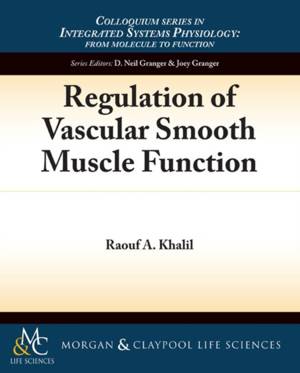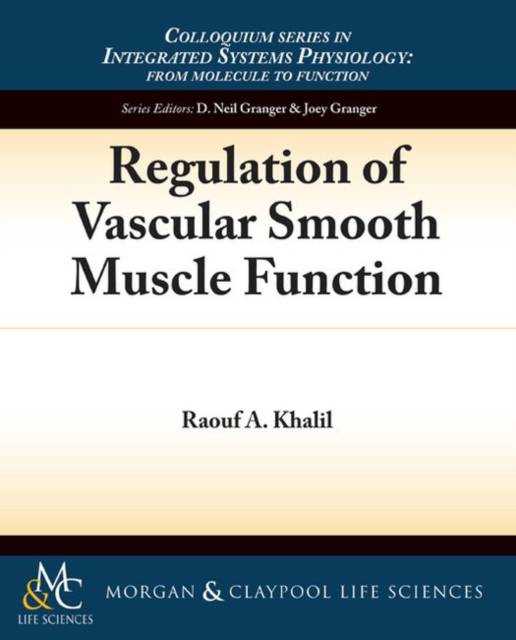
- Afhalen na 1 uur in een winkel met voorraad
- Gratis thuislevering in België vanaf € 30
- Ruim aanbod met 7 miljoen producten
- Afhalen na 1 uur in een winkel met voorraad
- Gratis thuislevering in België vanaf € 30
- Ruim aanbod met 7 miljoen producten
Zoeken
Omschrijving
Vascular smooth muscle (VSM) constitutes most of the tunica media in blood vessels and plays an important role in the control of vascular tone. Ca2+ is a major regulator of VSM contraction and is strictly regulated by an intricate system of Ca2+ mobilization and Ca2+ homeostatic mechanisms. The interaction of a physiological agonist with its plasma membrane receptor stimulates the hydrolysis of membrane phospholipids and increases the generation of inositol 1,4,5-trisphosphate (IP3) and diacylglycerol (DAG). IP3 stimulates Ca2+ release from the intracellular stores in the sarcoplasmic reticulum. Agonists also stimulate Ca2+ influx from the extracellular space via voltage-gated, receptor-operated, and store-operated channels. Ca2+ homeostatic mechanisms tend to decrease the intracellular free Ca2+ concentration ([Ca2]]i) by activating Ca2+ extrusion via the plasmalemmal Ca2+ pump and the Na+/Ca2+ exchanger and the uptake of excess Ca2+ by the sarcoplasmic reticulum and possibly the mitochondria. A threshold increase in [Ca2]]i activates Ca2+-dependent myosin light chain (MLC) phosphorylation, stimulates actin-myosin interaction, and initiates VSM contraction. The agonist-induced maintained increase in DAG also activates specific protein kinase C (PKC) isoforms, which in turn cause phosphorylation of cytoplasmic substrates that increase the contractile myofilaments force sensitivity to Ca2+ and thereby enhance VSM contraction. Agonists could also activate Rho kinase (ROCK), leading to inhibition of MLC phosphatase and further enhancement of the myofilaments force sensitivity to Ca2+. The combined increases in [Ca2]]i, PKC and ROCK activity cause significant vasoconstriction and could also stimulate VSM hypertrophy and hyperplasia. The protracted and progressive activation of these processes could lead to pathological vascular remodeling and vascular disease.
Specificaties
Betrokkenen
- Auteur(s):
- Uitgeverij:
Inhoud
- Aantal bladzijden:
- 62
- Taal:
- Engels
- Reeks:
Eigenschappen
- Productcode (EAN):
- 9781615041800
- Verschijningsdatum:
- 1/05/2010
- Uitvoering:
- Paperback
- Formaat:
- Trade paperback (VS)
- Afmetingen:
- 188 mm x 229 mm
- Gewicht:
- 176 g

Alleen bij Standaard Boekhandel
+ 91 punten op je klantenkaart van Standaard Boekhandel
Beoordelingen
We publiceren alleen reviews die voldoen aan de voorwaarden voor reviews. Bekijk onze voorwaarden voor reviews.











